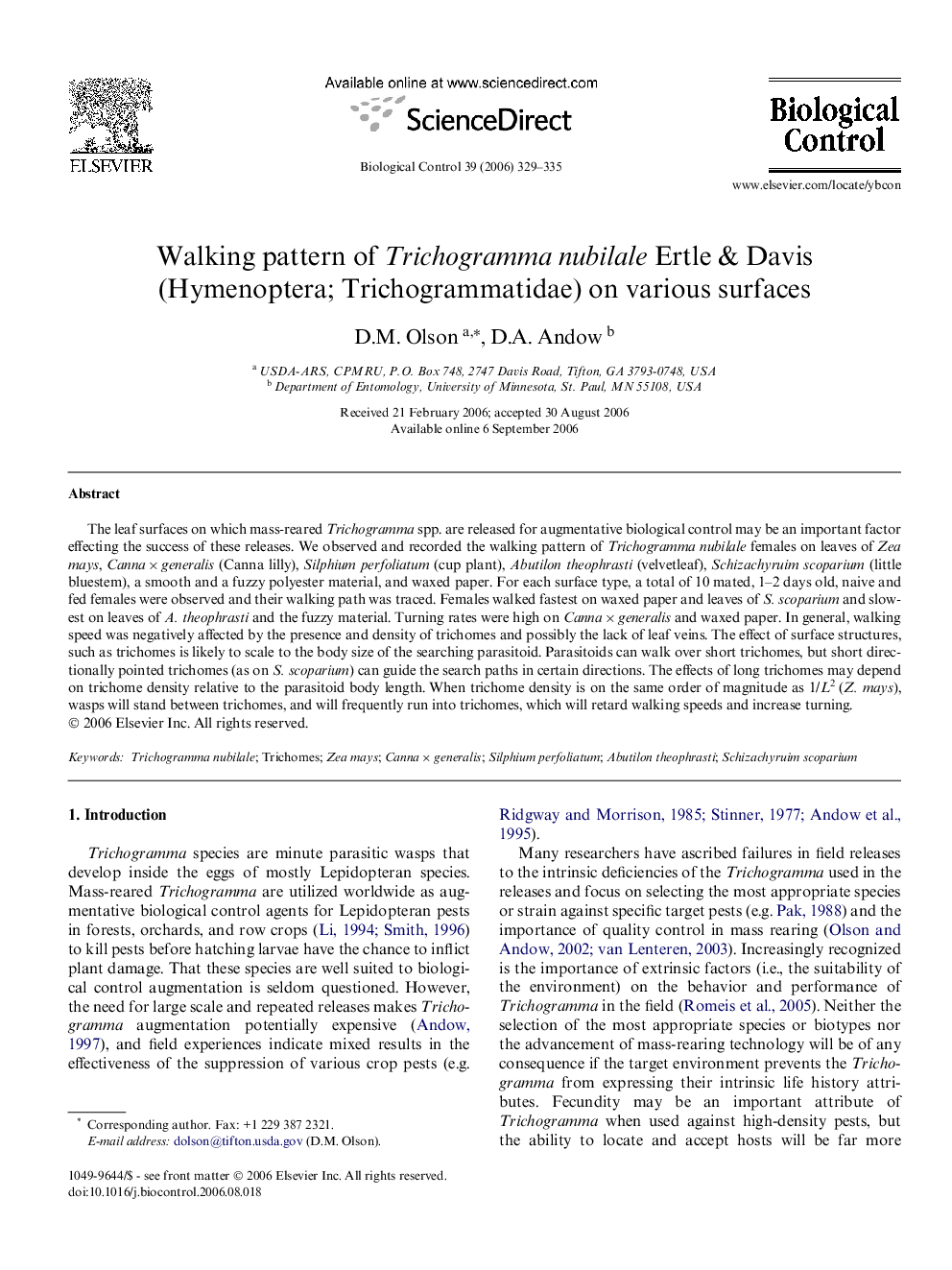| Article ID | Journal | Published Year | Pages | File Type |
|---|---|---|---|---|
| 4505380 | Biological Control | 2006 | 7 Pages |
Abstract
The leaf surfaces on which mass-reared Trichogramma spp. are released for augmentative biological control may be an important factor effecting the success of these releases. We observed and recorded the walking pattern of Trichogramma nubilale females on leaves of Zea mays, Canna Ã generalis (Canna lilly), Silphium perfoliatum (cup plant), Abutilon theophrasti (velvetleaf), Schizachyruim scoparium (little bluestem), a smooth and a fuzzy polyester material, and waxed paper. For each surface type, a total of 10 mated, 1-2 days old, naive and fed females were observed and their walking path was traced. Females walked fastest on waxed paper and leaves of S. scoparium and slowest on leaves of A. theophrasti and the fuzzy material. Turning rates were high on Canna Ã generalis and waxed paper. In general, walking speed was negatively affected by the presence and density of trichomes and possibly the lack of leaf veins. The effect of surface structures, such as trichomes is likely to scale to the body size of the searching parasitoid. Parasitoids can walk over short trichomes, but short directionally pointed trichomes (as on S. scoparium) can guide the search paths in certain directions. The effects of long trichomes may depend on trichome density relative to the parasitoid body length. When trichome density is on the same order of magnitude as 1/L2 (Z. mays), wasps will stand between trichomes, and will frequently run into trichomes, which will retard walking speeds and increase turning.
Related Topics
Life Sciences
Agricultural and Biological Sciences
Agronomy and Crop Science
Authors
D.M. Olson, D.A. Andow,
